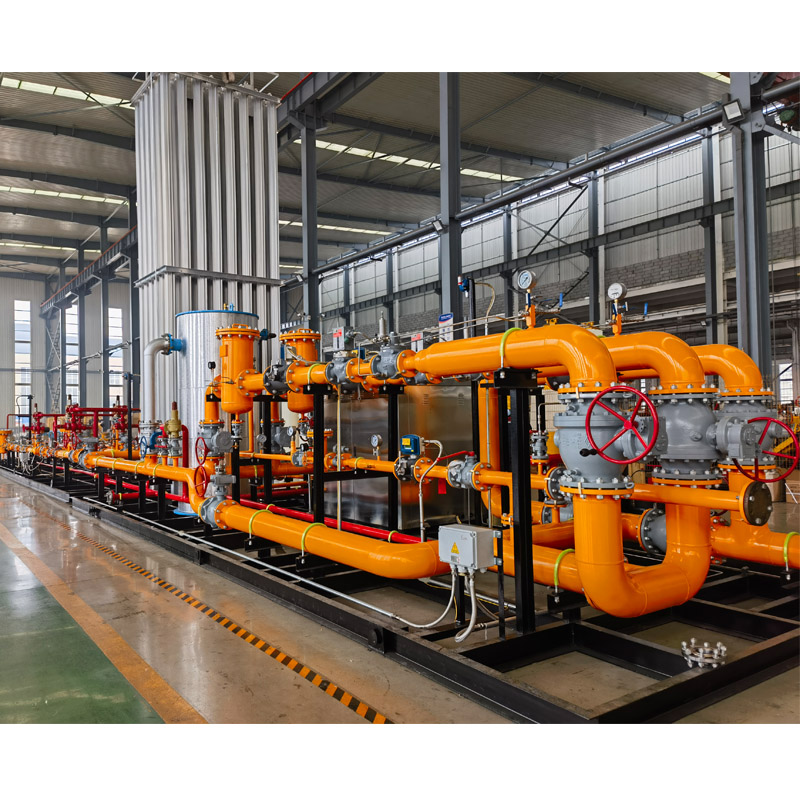
Nov . 24, 2024 00:15
Back to list
Efficiency and Design Considerations for Gas Heat Exchangers in Industrial Applications
Gas Heat Exchangers An Overview
Gas heat exchangers play a critical role in many industrial applications, ensuring the efficient transfer of thermal energy between gas streams. Utilizing various designs and technologies, these devices facilitate heating or cooling processes crucial to the operations of power plants, chemical processing facilities, and even residential heating systems. In this article, we delve into the importance, working principles, types, and applications of gas heat exchangers.
Importance of Gas Heat Exchangers
Gas heat exchangers are essential for improving energy efficiency. By transferring heat from one gas stream to another, these systems minimize energy losses and reduce fuel consumption. This efficiency is particularly important in industries where high temperatures are required, such as in the production of electricity or chemicals. Moreover, gas heat exchangers contribute to achieving environmental benefits by lowering emissions; when less fuel is consumed, less carbon dioxide and other pollutants are released into the atmosphere, thus aiding greenhouse gas mitigation efforts.
Working Principles
The fundamental principle of a gas heat exchanger is simple it allows two gases at different temperatures to exchange heat without mixing. The two gas streams usually flow through a series of tubes or channels, separating them but allowing thermal contact. The hot gas transfers heat to the cold gas, thereby increasing the temperature of the latter while cooling the former. This process relies on the principles of convection and conduction, described by Newton's Law of Cooling and Fourier’s Law of Heat Conduction.
The effectiveness of a gas heat exchanger is determined by factors such as the temperature difference between the gas streams, the type of heat exchanger used, and the flow arrangement (counterflow, parallel flow, or cross-flow)
. Design considerations, including surface area and material selection, also play crucial roles in optimizing heat transfer efficiency.Types of Gas Heat Exchangers
Gas heat exchangers come in various designs, each suited to specific applications and operating conditions. The most common types include
gas heat exchanger

1. Shell and Tube Heat Exchangers These consist of a series of tubes, with one gas flowing through the tubes and the other surrounding them in the shell. This design is effective for high-pressure applications.
2. Plate Heat Exchangers Composed of multiple thin plates, this design allows for a compact and efficient heat transfer surface. The plates create channels for gas flow, thus maximizing surface area.
3. Air-to-Air Heat Exchangers Commonly found in HVAC systems, these exchangers are designed to recover heat from outgoing air to preheat incoming fresh air, enhancing energy savings in ventilation systems.
4. Regenerative Heat Exchangers These utilize a thermal storage medium that absorbs heat from one gas and later transfers it to another gas, making them effective for specific applications requiring intermittent heat exchange.
Applications
Gas heat exchangers are widely used across various sectors. In power generation, they are crucial in processes such as gas-turbine cycles, where they maximize thermal efficiency. The petrochemical industry employs heat exchangers for processes like distillation and cracking, where temperature control is vital.
In the HVAC sector, gas heat exchangers improve the efficiency of heating systems, reducing energy consumption for air conditioning and heating. Additionally, the food processing and pharmaceutical industries utilize these devices to maintain process temperatures under strict sanitation guidelines.
Conclusion
Gas heat exchangers are fundamental components in many industrial and commercial processes, offering significant energy savings and environmental benefits. By understanding their design, working principles, and applications, engineers can optimize heat transfer processes and enhance the overall efficiency of their systems. As energy sustainability becomes increasingly important, the role of gas heat exchangers will undoubtedly expand, meeting the demands of both industry and environmental protection.
Next:
Latest news
-
Safety Valve Spring-Loaded Design Overpressure ProtectionNewsJul.25,2025
-
Precision Voltage Regulator AC5 Accuracy Grade PerformanceNewsJul.25,2025
-
Natural Gas Pressure Regulating Skid Industrial Pipeline ApplicationsNewsJul.25,2025
-
Natural Gas Filter Stainless Steel Mesh Element DesignNewsJul.25,2025
-
Gas Pressure Regulator Valve Direct-Acting Spring-Loaded DesignNewsJul.25,2025
-
Decompression Equipment Multi-Stage Heat Exchange System DesignNewsJul.25,2025

